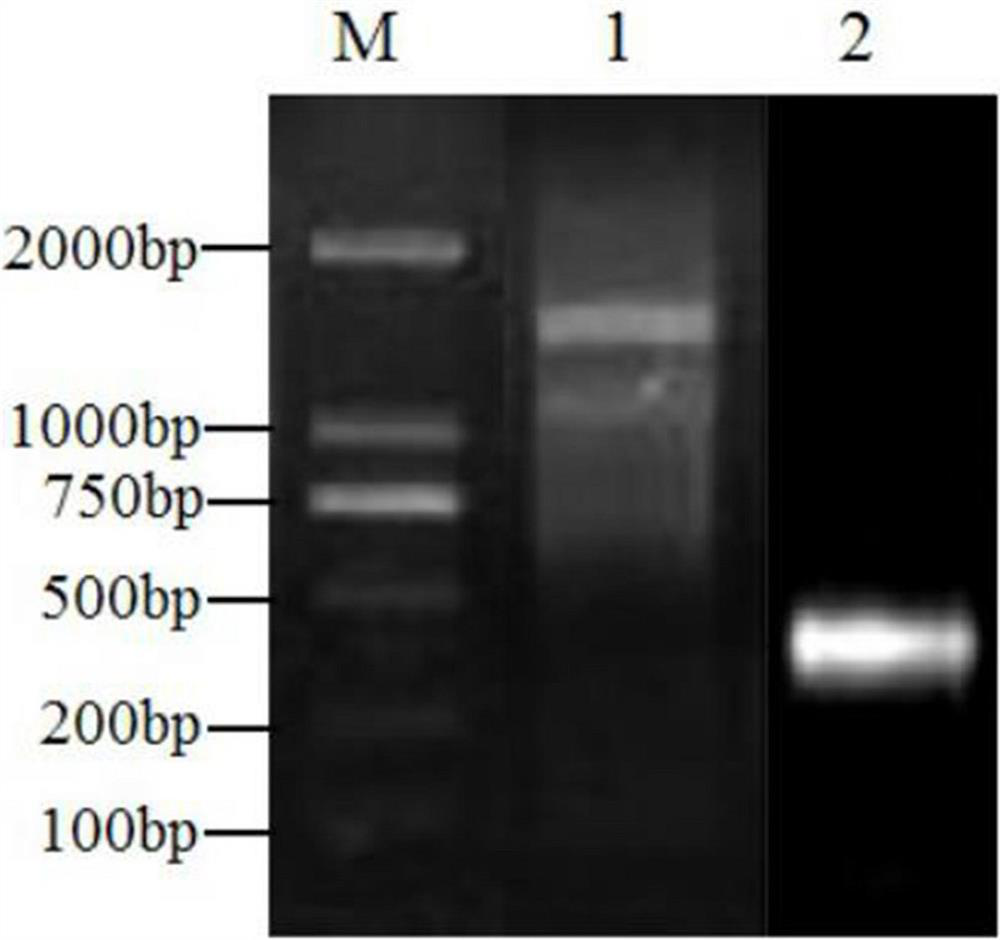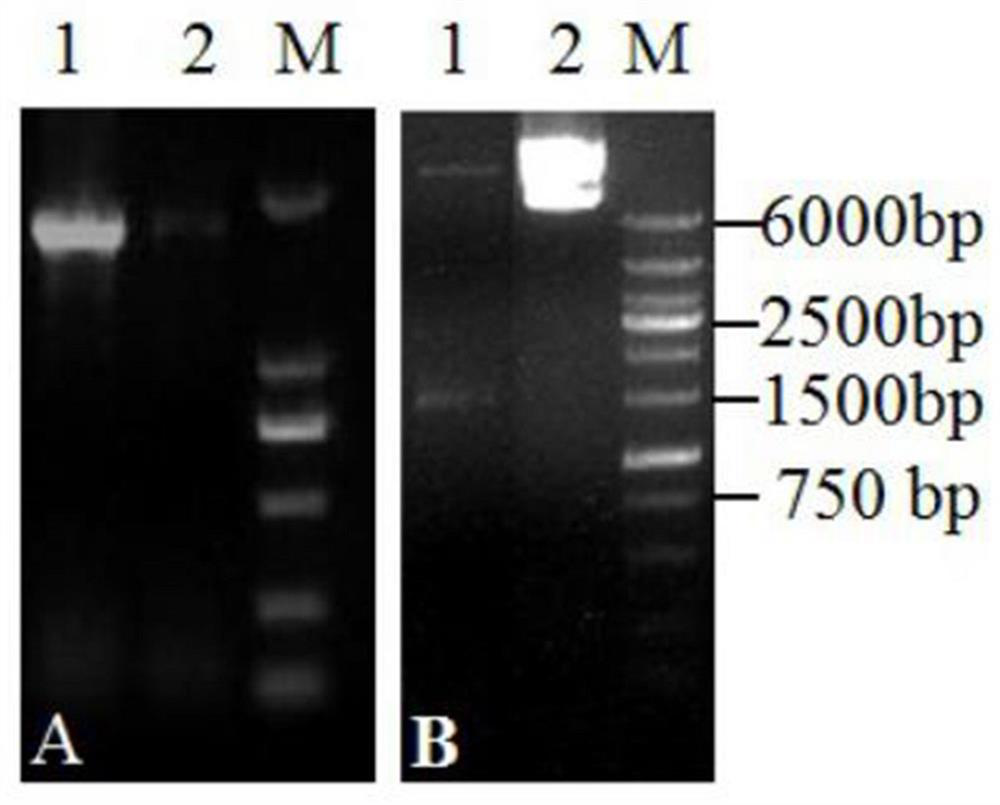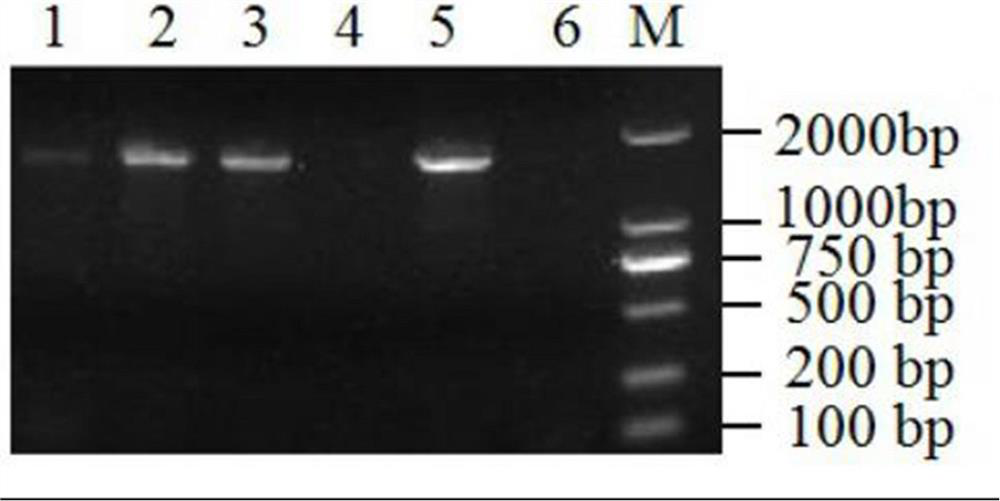A wheat gene for improving plant scab resistance and its application
A technology for head blight and plants, applied in the field of biogenetic engineering, can solve the problems of less research and achieve the effects of overcoming the difficulty of distant hybridization, improving the efficiency of variety breeding, and shortening the breeding time
- Summary
- Abstract
- Description
- Claims
- Application Information
AI Technical Summary
Problems solved by technology
Method used
Image
Examples
Embodiment 1
[0037] Example 1 TaXAT Gene acquisition and analysis
[0038] According to the obtained EST sequence of the target gene, use Primer Premier 5.0 to design primers for 5' and 3' RACE nested amplification: 5'-Primer (its sequence is shown in SEQ ID NO.3) and 3'-Primer ( Its sequence is shown in SEQ ID NO.4);
[0039] Using the ear cDNA of Sumai No. 3 inoculated with Gibberella and treated for 8 hours as a template, the 3’ and 5’ RACE amplifications were performed using the cDNA Amplification kit:
[0040] PCR reaction system: 2×SeqAmp Buffer 25.0 μl, SeqAmp DNA Polymerase 1.0 μl, cDNA template 2.5 μl, 10×Universal Primer A Mix 5 μl, 5’ or 3’-Primer (10 μM) 1 μl, ddH 2 O 15.5 μl.
[0041]PCR reaction program: 94°C for 3 minutes; 94°C for 30 seconds, 55°C for 30 seconds, 72°C for 2 minutes, 30 cycles; 72°C for 5 minutes;
[0042] The PCR products were subjected to gel electrophoresis on 1% agarose gel, and the electrophoresis results were as follows: figure 1 as shown, fig...
Embodiment 2
[0045] Example 2 Construction of Plant Expression Vectors
[0046] Using the spike cDNA of Sumai 3 as a template, the primers TaXATFXba (shown in SEQ ID NO.5) and TaXATRSac (shown in SEQ ID NO.6) were used to amplify TaXAT complete open reading frame, and introduced restriction enzyme sites Xba I and Sac I, recovery of target fragments.
[0047] PCR reaction system: 10×Ex buffer 5 µl, MgCl2 (25mM) 4 µl, dNTP (2.5mM) 1.6 µl, TaXATFXba primer (10uM) 1 µl, TaXATRSac primer (10uM) 1 µl, ExTaq 0.25 µl, ddH2O 13.7 µl.
[0048] PCR reaction program: 94°C for 3 minutes; 94°C for 15 seconds, 55°C for 30 seconds, 72°C for 2 minutes, 30 cycles; 72°C for 5 minutes;
[0049] restriction endonuclease Xba I and Sac I digested pCAMBIA2301-CaMV35S and the target gene fragment respectively, digested at 37°C for 15 minutes, and recovered again.
[0050] Enzyme digestion system: target fragment 200ng or vector 1000ng, 10× Buffer 2μl, Xba I 1μl, Sac I 1μl,ddH 2 O supplemented to 20...
Embodiment 3
[0061] Example 3 Arabidopsis genetic transformation and gene function verification
[0062] The experiment was divided into transgenic group and control wild group:
[0063] Transgenome: Genetic transformation of Arabidopsis thaliana using flower dip method (see Clough SJ, Bent AF(1998) Floral dip: a simplified method for Agrobacterium-mediatedtransformation of Arabidopsis thaliana. Plant J 16: 735–743.), will implement The plant expression vector pCAMBIA2301-CaMV35S- obtained in Example 2 TaXAT Transferred into the Arabidopsis plant, after being screened by MS medium containing kanamycin (final concentration 50mg / L), the Arabidopsis plant that grew true leaves and was green was transplanted on the soil substrate, placed in Normal culture in the incubator for 6-8 weeks. The culture conditions are: relative humidity 80%, constant temperature 20-24 ℃, light intensity 80-200umol / M 2 / S, and the photoperiod was 8 h in the dark and 16 h in the light.
[0064] Control wild grou...
PUM
 Login to View More
Login to View More Abstract
Description
Claims
Application Information
 Login to View More
Login to View More - R&D
- Intellectual Property
- Life Sciences
- Materials
- Tech Scout
- Unparalleled Data Quality
- Higher Quality Content
- 60% Fewer Hallucinations
Browse by: Latest US Patents, China's latest patents, Technical Efficacy Thesaurus, Application Domain, Technology Topic, Popular Technical Reports.
© 2025 PatSnap. All rights reserved.Legal|Privacy policy|Modern Slavery Act Transparency Statement|Sitemap|About US| Contact US: help@patsnap.com



